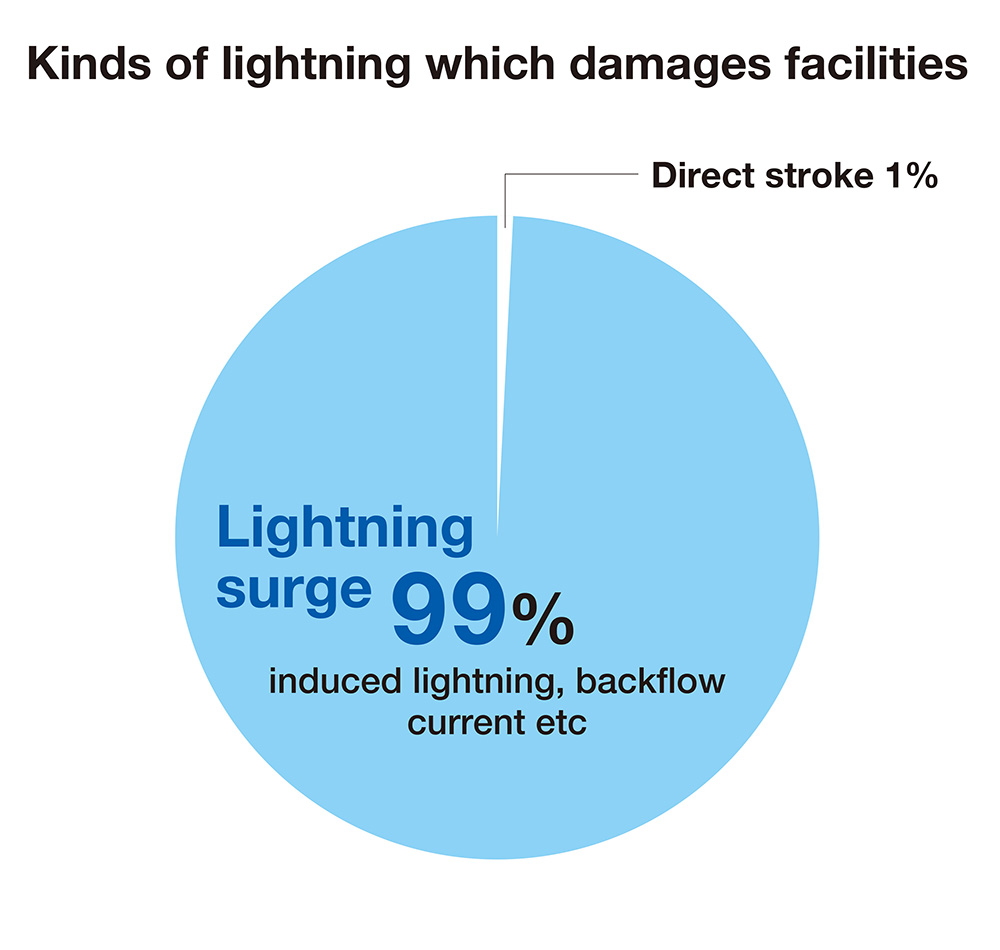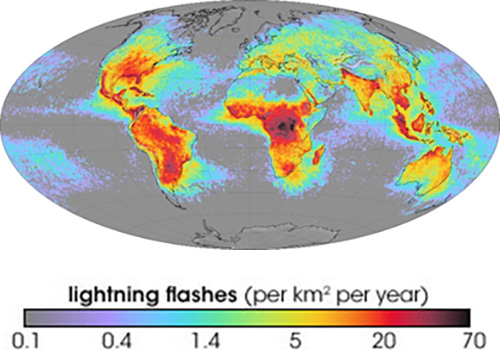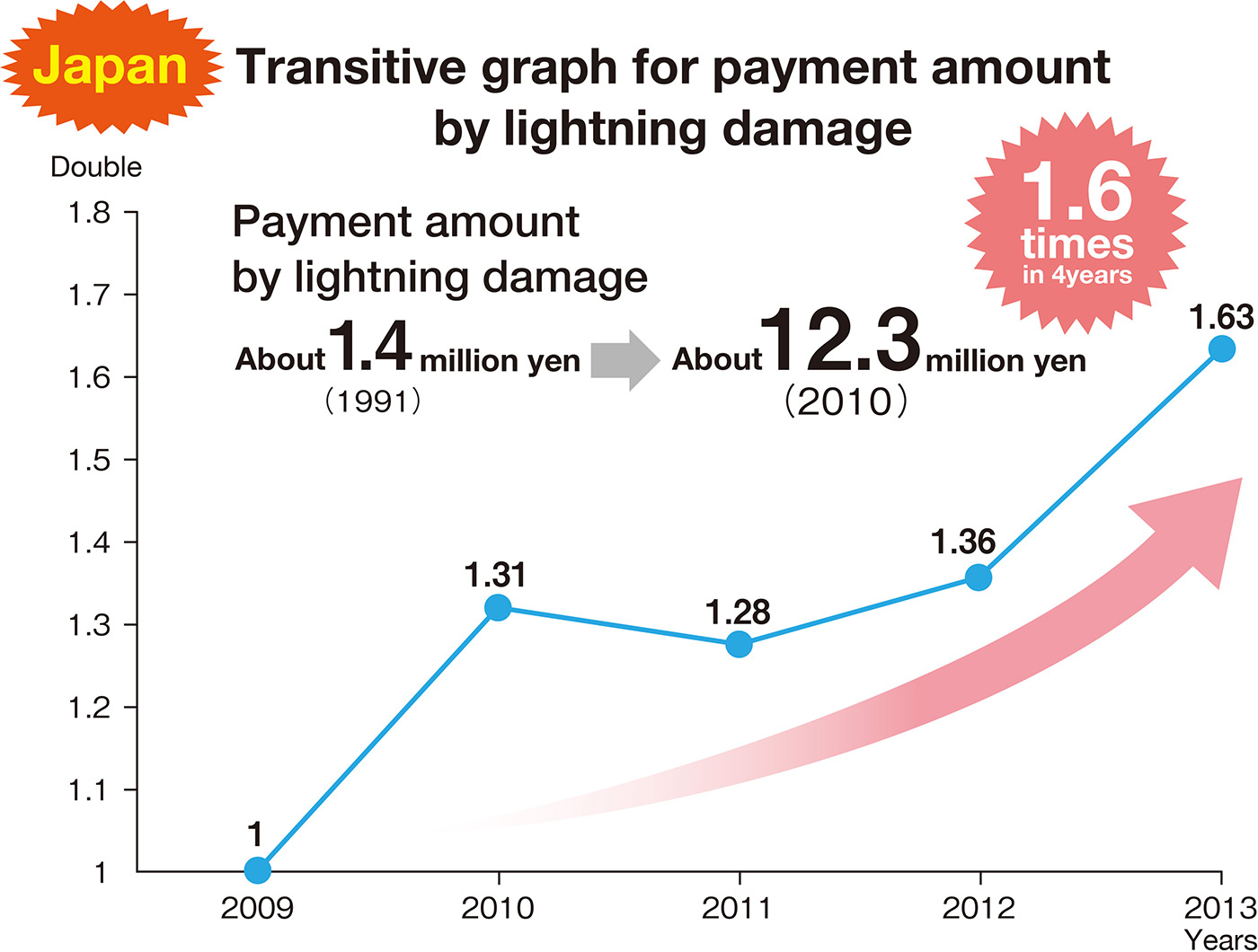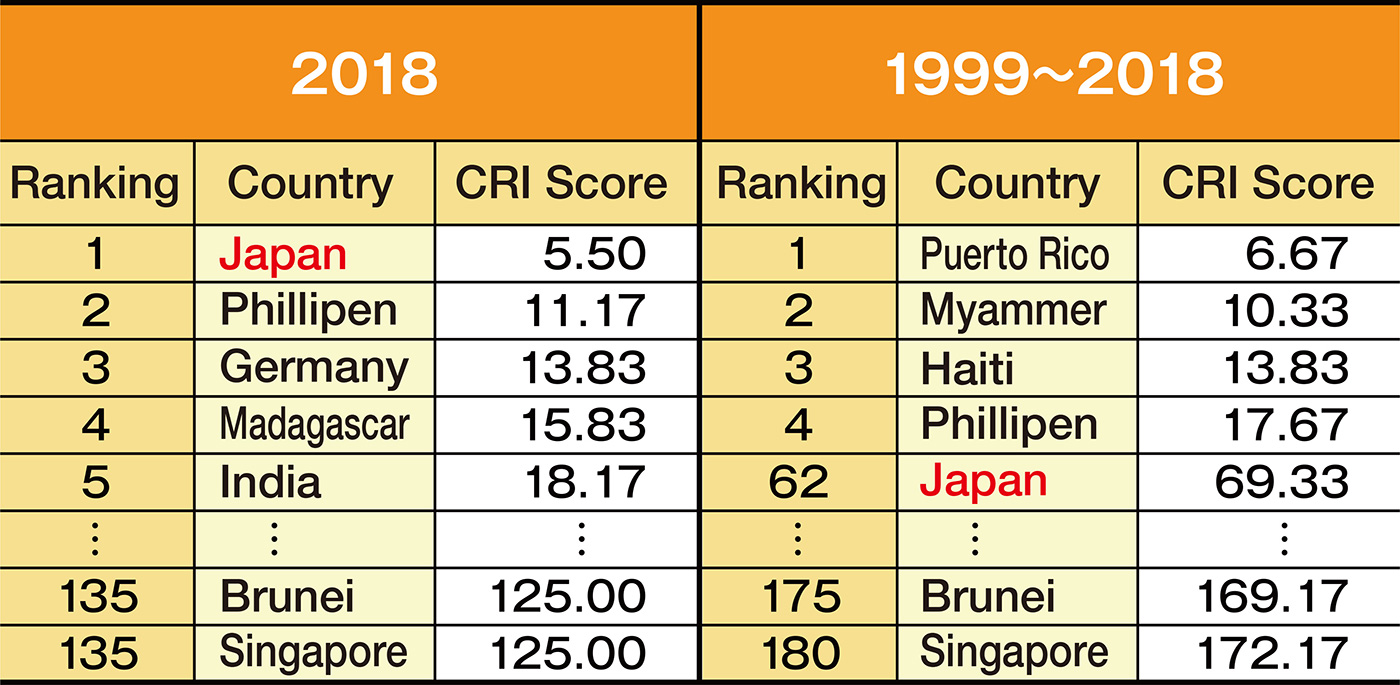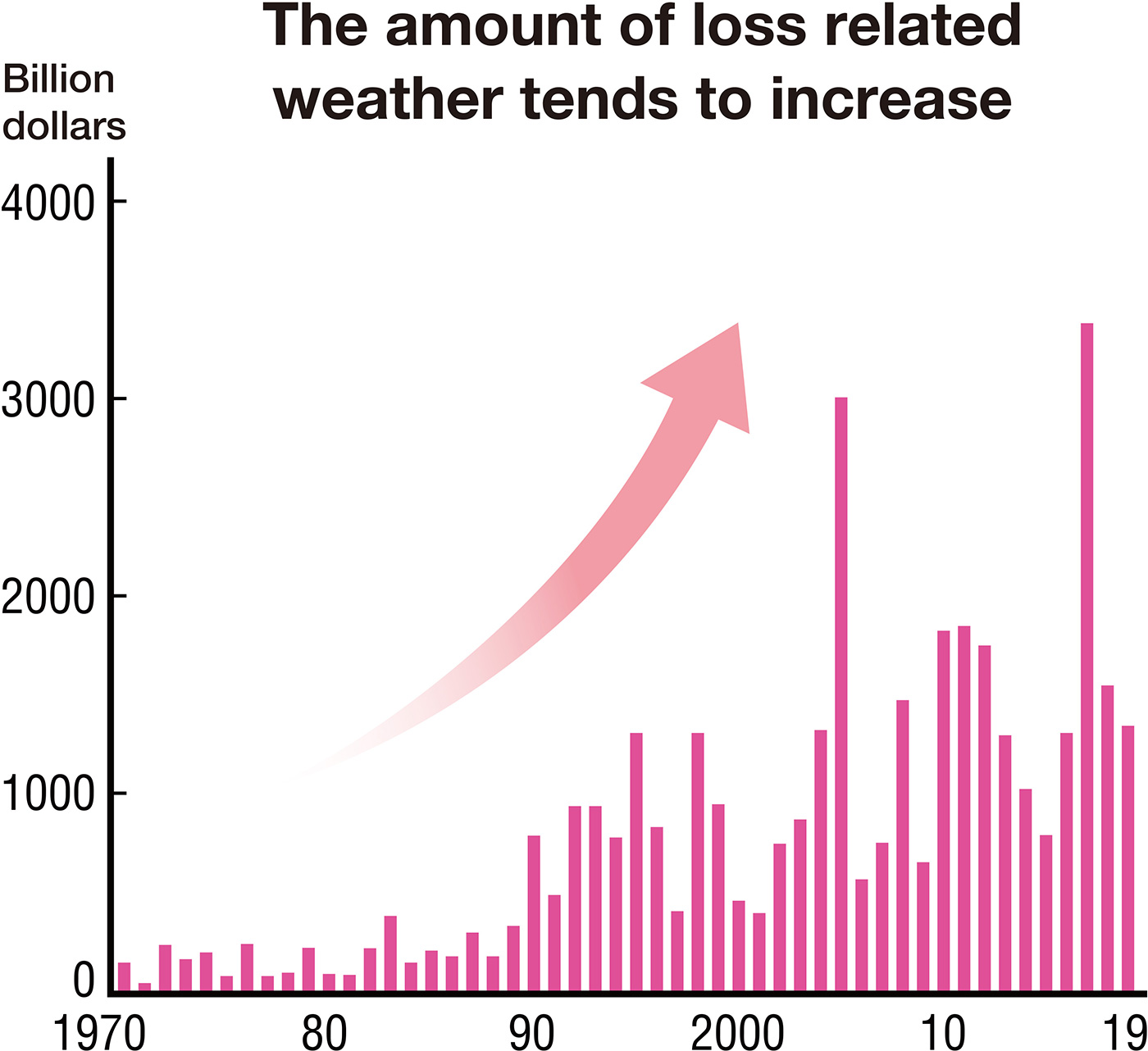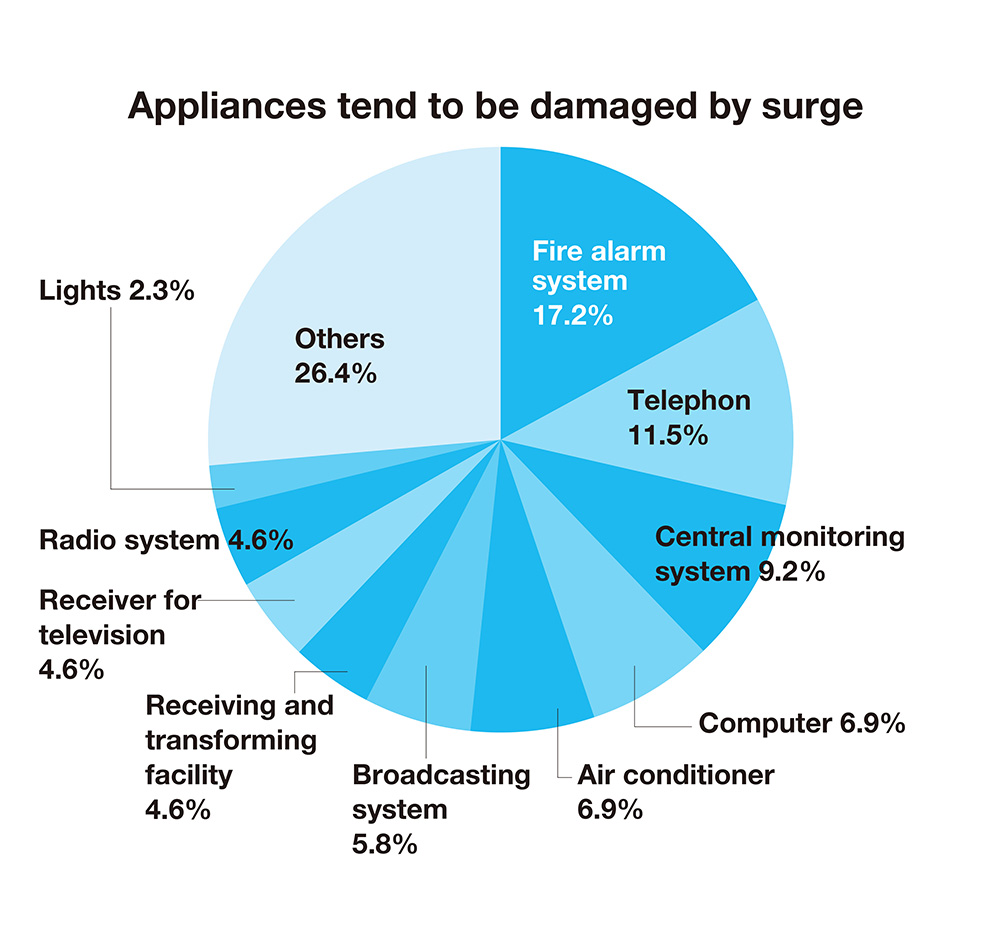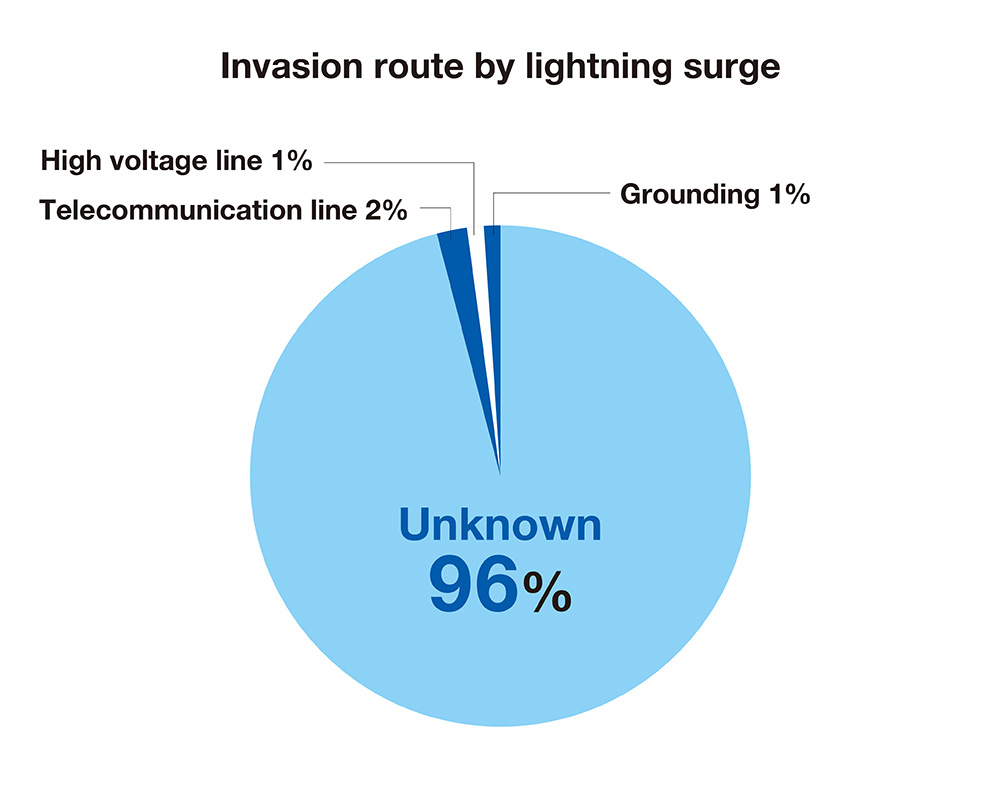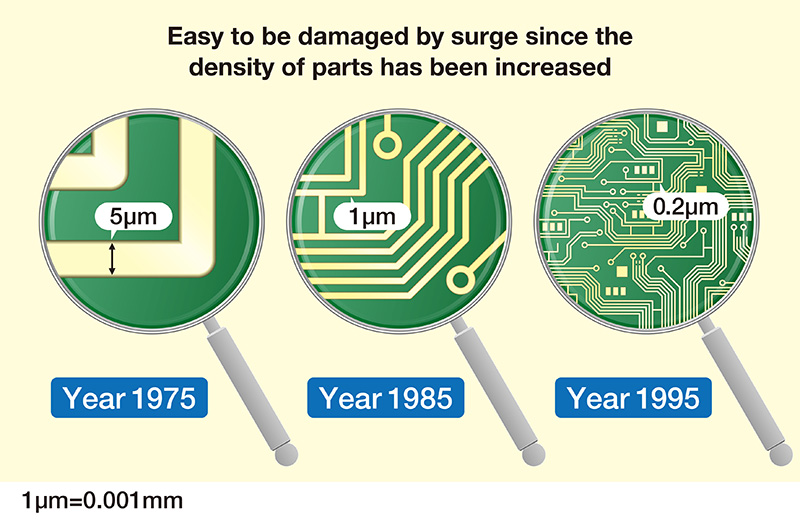99% of lightning damage is caused by “lightning surges
And the route of entry for most of them is unknown.
We tend to think of lightning damage as a direct strike, but only 1% of lightning damage is caused by a direct strike. Most lightning damage is caused by “lightning surge” (induced lightning, backflow lightning, etc.). The need for lightning surge protection has increased in recent years.
